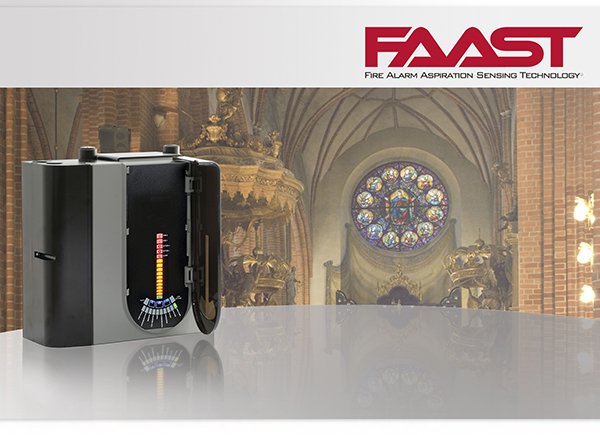Fire detection at historical sites
 According to manufacturer Honeywell, its FAAST LT Aspiration Smoke Detector is being used in an increasing number of historical buildings where fire detection can pose a challenge.
According to manufacturer Honeywell, its FAAST LT Aspiration Smoke Detector is being used in an increasing number of historical buildings where fire detection can pose a challenge.
The company claim that the FAAST LT Aspiration Smoke Detector is designed to meet EN54-20 Class B and C with features including a near-invisible sampling pipe network with minimal aesthetical impact – a single device can monitor up to 2,000 m2 (Class C) and 600 m2 (Class B) areas where many point detectors would otherwise be required, they say. Adding that minimal maintenance is needed on the device itself, Honeywell attribute innovative two-stage ultrasonic airflow monitoring at the inlets and optical chambers, to identify issues like clogged sample holes before they become an issue, for maximised system uptime.
These system attributes allow FAAST LT to easily adapt to the conditions that make most other fire detection methods problematic, say Honeywell; namely high ceilings, complex architectural features, reduced maintenance needs and false alarm immunity in fluctuating environmental conditions.
With the ability to remotely mount the device in an easily accessible location, creating simplified ground-level testing, Honeywell add that FAAST LT easily adapts to meet the challenges of culturally important structures.
Fire detection at historical sites
According to manufacturer Honeywell, its FAAST LT Aspiration Smoke Detector is being used in an increasing number of historical buildings
Safety & Health Practitioner
SHP - Health and Safety News, Legislation, PPE, CPD and Resources Related Topics
Adapting fire safety: Evolving suppression technologies for modern hazards
Human impact of fire investigated in new study
Council takes legal action against tenants who refuse to have fire smoke detectors repaired

